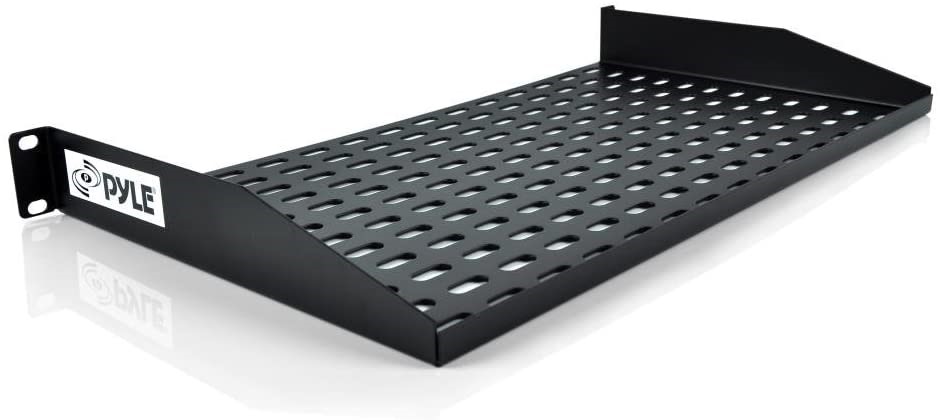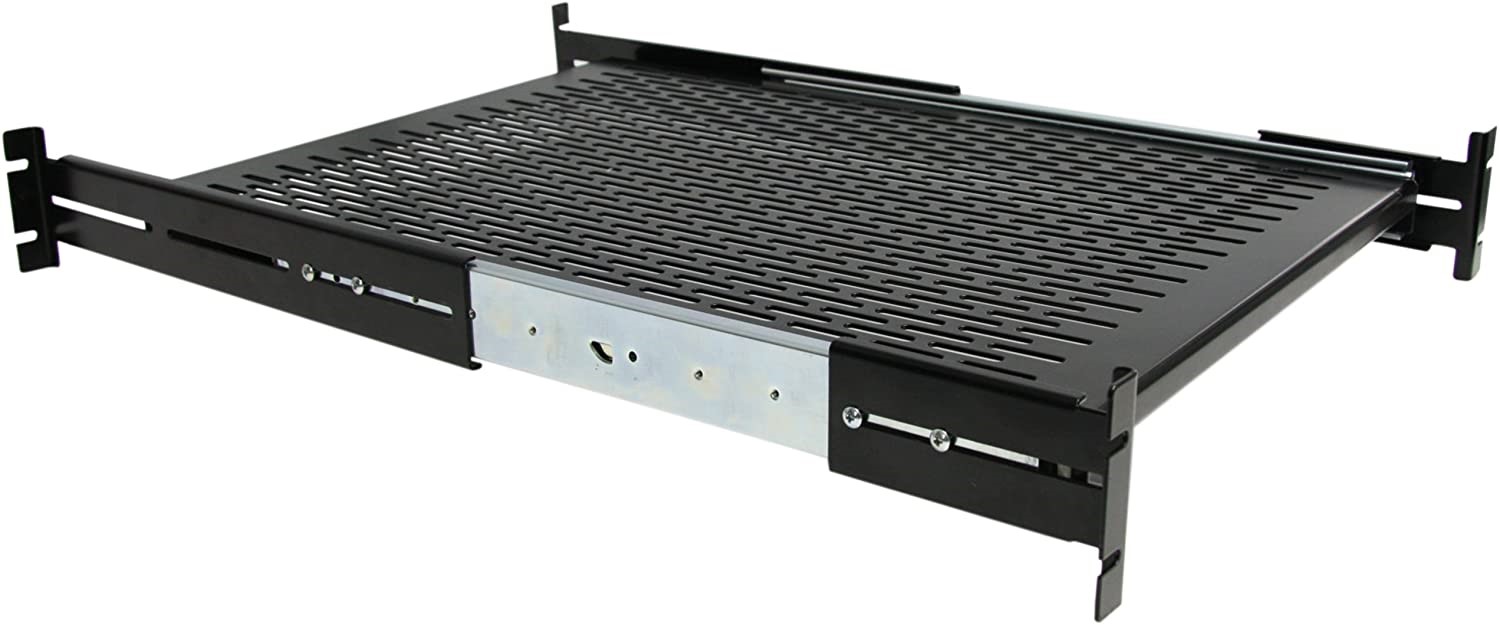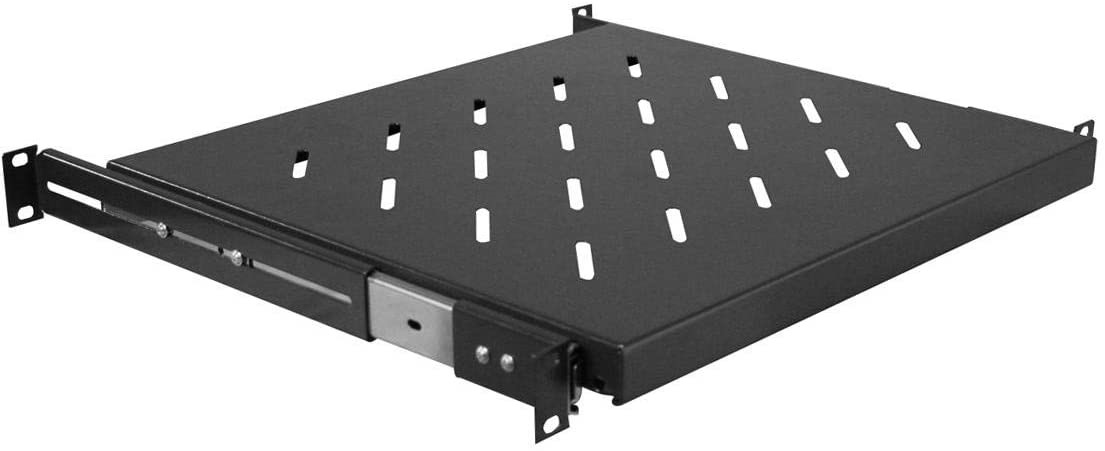The servers deployed at data centers require particular management and handling to ensure that the overall system works efficiently. For this purpose, sliding rack mount shelves are considered an essential accessory. These devices allow you to handle servers conveniently without getting tangled up in wires, provide easy access for maintenance, and are much easier to keep within working temperatures.
This article covers five of the best sliding rack mount shelf options available for servers. We will compare features, delve into the advantages and disadvantages of each device, and consider why each model made it into our list. But first, we will discuss the general features of these sliding rack mount shelves and what features to consider before you head out into the market.
Buyers’ Guide
There are certain considerations to check for before choosing a sliding shelf. These include the following:
Know Your Needs
The first rule of making any purchase is: Know what you are looking for. And for that, you need to know the size and type of your equipment. What will you put in the racks? This is not just for the current moment; you also want to look into future needs.
Server racks are measured in “rack units,” with a single thin pizza box server representing one rack unit. Larger hard disk arrays and servers can take up more space. Most big organizations use a standard 42U size. This size is around 6 feet high, but if you need more space, 45U racks are also available.
Now, rack units only measure the height. It would help to consider depth, as well. If you want the device only for telecom equipment and network switches, a shallow 13 to 17 inches deep rack will be fine. However, actual server equipment may need more depth (usually around 40 inches).
Lastly, the standard rack width is 19 inches, and this is considered typical. Whether you are mounting simple network switches or servers, all rack-mountable devices follow the standard width.
Rails
Several rack-mountable servers have the option to be mounted with the help of rails. Standard rails are screwed into the four posts on the rack, and then the server slides into the rack through the corresponding rails. Sound confusing? Think of a simple drawer going into a cabinet. The rails on a sliding rack device act just like that.
Rails provide extra stability and allow easy access to your servers. You can slide the device out of the shelf like a drawer, which comes in handy when you have more than one server in a rack. This feature makes maintenance, troubleshooting, and upgrades much more convenient. Most professionals prefer to use rails for their equipment. But, we recommend them only for heavier equipment.
Location
Consider where you will be putting your network equipment. Will you be placing it on the floor? Or will you need it on the wall? Perhaps you want it mounted on the ceiling? Not all racks will be suitable for every location.
Cooling
Electronics equipment generates a lot of heat. When you have a lot of equipment stuffed in a single room, it generates more heat. So, make sure that your server rack has enough ventilation. If you are putting several types of equipment on one shelf, space them out. For instance, if you have 24 rack units worth of equipment, purchase a 40U rack so that you can space it out and have better airflow.
Threaded or Unthreaded?
Modern server racks come with at least three different kinds of screw holes. These include threaded rounded holes, unthreaded square holes, and unthreaded round holes. The most common threaded hole type is 12-24. These have thicker posts because they have to support the threads. Threaded racks are ideal for audio equipment, network switches, telecom instruments, and other devices that do not utilize rails.
For rail-mounted equipment, you will need unthreaded holes. This is because it is much easier and more straightforward to install rails in these holes. In recent years, these hole types have been supplemented with square holes. You can even mix and match multiple rails and mounted and non-rail mounted equipment in the same server rack.
List of the Best Server Mount Shelf Models
Pyle 19-Inch 1U Server Rack Shelf

The Pyle vented shelves are designed to promote proper air ventilation (thanks to a Punch-Out Shelf Bottom), safety, and lower temperatures, all of which contribute to maintaining your machine’s optimum health. In addition to these features, this particular model accommodates not only the non-rack mounts but also half-rack width equipment.
The max weight load capacity of this model is 110 pounds, and it is fully compatible with all 19-inch server racks and 1U server shelves. Versatile and adaptable, this server rack shelf has multiple applications and can be installed in various locations. This model is perfect for in-studio work, on-stage performances, or even smaller home network solutions.
At 10 inches deep, this shelf unit is perfect for any custom network rack build. It is easy to install, sturdy enough and comes at a very economical cost. This model is highly recommended!
Buy Here: Amazon
AC Infinity Vented Cantilever 2U Universal Server Rack Mount Shelf

If your equipment is more computational and requires higher calculations, there is a high chance of excessive heat dissipation. This can be dangerous for your machines’ life and might also affect its performance. A vented server shelf like AC infinity’s Cantilever 2U Universal can help the servers give off the liberated heat to maintain optimum performance.
This model is designed to support non-rack mountable equipment, including routers, monitors, UPS, and tower PCs. The device fits into standard 19-inch racks and takes up 2U of space. Its 2.4mm thick steel construction and dual flange design allow the rack to hold up to 100 pounds of weight. When it comes to usable space, this server rack offers 43.7cm in width, 40cm in depth, and 8.1cm in height, with a downward lip of 7mm.
Overall, this model is a super sturdy and durable shelf. The look of the shelf is attractive and the heat flow is uninterrupted. Our only complaint is that the rack shelves need to be drilled with thinner gauged, less commonly sized mounting holes. These thin anchors and screws are not generally used in rack gear.
Buy Here: Amazon
StarTech.com 12U Heavy Duty 2 Post Open Frame Network Rack

With more than enough space for network, server, or telecom hardware, the Star Tech 12U heavy-duty open frame network rack is perfect if you are super tight on space. This device comes with a two-post mounting solution, which means a much smaller footprint. However, the design still ensures stability – no matter where you place it.
StarTech has managed to manufacture a server rack that can handle up to 350lbs of overall weight while still boasting an incredibly simple design. This device holds up well and looks incredible. Also, it is a no-frills piece of hardware.
Unfortunately, the instructions manual is very poor. So, you are on your own in this respect, though putting it together is very easy. All the tool-less clip nuts are included in the package, and you do not even need a screwdriver to install this model.
No matter what size or style of this model you purchase, it offers incredible value for the price. With features like a stable frame, an easy-to-assemble design, sturdy construction, and exceptional material quality, Startech’s Open Frame Network Rack is tough to ignore.
P.S.: The Startech model is backed by a lifetime warranty. What more can one ask for?
Buy Here: Amazon
StarTech 2U Sliding Server Rack Mount Shelf

This is yet another 2U rackmount shelf, featuring a versatile vented design. This model works like a charm for your AV, network, computer, and data needs. While the frame itself is solid, its weight handling capacity is somewhat limited (just 50 pounds), making it suitable for IT and business professionals, but not for bigger organizations that stack larger data centers and servers.
This cold-rolled steel shelf comes with two adjustable rails. This allows the shelf to be installed into racks or cabinets that are 20 to 30 inches in depth. What is more, the shelf even has a locking feature that prevents the device from accidentally falling out or sliding back during maintenance.
That said, the main benefit of this product is increased peripheral accessibility. You can store small, non-rack mountable equipment, tools, and other peripherals to keep them readily available. Last but not least, this 2U sliding rack tray comes with StarTech’s lifetime warranty and technical support.
Buy Here: Amazon
Gator RackWorks Rackmount Sliding Accessory shelf; 1U, 14” Deep

The best server rack model is not only stiff and dimensionally suitable for your requirements but can also provide thermo-resistance. This describes Gator RackWorks’ sliding accessory shelf. This model is 14.8 inches deep and comes with elongated vent holes that optimize air circulation around the installed equipment. Plus, this model can fit into the standard 19 inches rack cases.
Manufactured with 16-gauge cold-rolled steel, this shelf has a black powdered finishing and can handle up to 5 pounds of weight. One minor quibble is the lack of a locking mechanism. The manufacturer did try to make up for this by having a small bushing or rubber housing that provides some locking. In addition, if you are mounting any other way than flat, the shelf will slide out due to its weight.
That said, Gator’s sliding accessory shelf does what it is supposed to do. The device slides in and out without any effort, is well made, has a sturdy design, and comes at an affordable cost, keeping in mind the weight you are mounting on its surface.
Buy Here: Amazon
Final Thoughts
This list of server rack mounting shelves should give you adequate knowledge to buy the best fit server rack for your setup. Remember to consider computing power, server connections, infrastructure load, follow up, heat dissipation, size, weight, materials, management, and mobilization requirements before settling on any model. In this way, you can not only conserve your financial resources for the most appropriate server rack but also protect your machines and data from any damage. Best of luck to you!
from Linux Hint https://ift.tt/3l8v5zJ




0 Comments